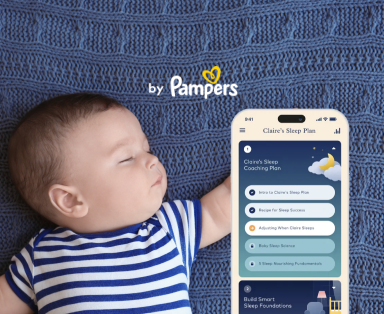When Do Kids Stop Napping? Signs & Tips
IN THIS ARTICLE
You might recall those early newborn days when your child napped frequently throughout the day. As they grew, two naps became one, and eventually, just an afternoon nap was enough. But when do kids stop napping altogether?
Let’s explore when most children transition out of naps, how to recognize the signs that your toddler is ready to stop napping, and what to do when that time comes.
At What Age Do Kids Stop Napping?
As toddlers grow, their sleep needs to evolve. Do 2-year-olds need naps? Most do. Toddlers between 1 and 2 years old typically need 11 to 14 hours of sleep each day. At this stage, some toddlers may still take two naps, but by around 18 months, most settle into one afternoon nap.
By the preschool years (ages 3 to 5), children generally need about 10 to 13 hours of sleep. During this time, many preschoolers start getting all their rest at night and gradually stop needing their afternoon nap.
When children reach school age (6 to 12 years), they typically need 9 to 12 hours of sleep at night. Do 6-year-olds need naps? Most don’t, but if your older child is still napping regularly, it might be helpful to shift bedtime earlier to ensure they’re getting the recommended amount of nighttime rest.
Keep in mind that every child is different. While many stop napping between 3 and 5 years old, some may give up naps as early as 2, while others continue until age 6. There’s no set timeline, and that’s perfectly normal. The transition may not necessarily be linear either. Some days your child may nap, while on others they won’t. As naps become shorter over time, even a brief rest can be enough to recharge them.
Signs Your Child Is Ready to Stop Napping
Your child will stop napping when they no longer need extra rest to stay energized throughout the day. While the timing can vary, there are clear signs a toddler is ready to drop a nap.
Pay attention to these cues to help you know when to stop naps:
Difficulty falling asleep during naptime. Instead of sleeping, your child may attempt to play or sing while lying down for naptime.
Difficulty falling asleep at bedtime. Naps that interfere with nighttime sleep can be a sign of readiness. If your child stays up late or resists bedtime, shortening or eliminating the afternoon nap could help restore balance.
Waking up too early. Children who wake up earlier than usual may not be tired enough at night. Reducing nap length or skipping it can encourage longer nighttime rest.
Staying alert and happy without napping. If your child seems content, energetic, and doesn’t get cranky or overtired on days without a nap, it could mean they’re naturally outgrowing the need for daytime rest.
Not falling asleep at all during nap attempts. If your child consistently skips naps but remains cheerful and not cranky after a nap attempt, it’s often a sign they are ready to stop napping altogether.
What Do You Do When Your Kid Stops Napping?
Once you notice the signs your toddler is ready to drop a nap, transitioning smoothly can help avoid crankiness and overtiredness. Here are some simple ways to adjust:
Quiet Time
Instead of cutting naps abruptly, encourage an hour of quiet time when naps would typically occur. This transition period helps your child rest without the pressure of falling asleep.
Activities like looking at picture books, coloring, doing puzzles, or playing with plush toys are great options. The goal is to keep things calm and low-energy. Avoid noisy or overly stimulating activities during this time.
If your child’s daycare facility, preschool, or kindergarten has set naptimes but your child has already given up napping, ask that your child be allowed quiet time instead of forcing a nap.
Establish a Bedtime Routine
When naps phase out, moving bedtime earlier can help your child adjust. A consistent routine—like reading a book, brushing teeth, and winding down—signals that it’s time for sleep.
At this stage, your child will likely need between 10 and 12 hours of sleep at night. Shifting bedtime to 30 minutes earlier can ensure they get enough rest, especially if they need to wake up at a specific time for school or daycare.
Let Your Child Decide if They Want to Nap
The transition from naps isn’t always consistent. On some days, your child might feel more tired or cranky and could still benefit from a nap. Letting them nap occasionally, even after they’ve started skipping naps regularly, can help avoid overtiredness.
It’s common for children to go back and forth between needing naps and managing without them. Pay attention to their cues and adjust as necessary, allowing flexibility without forcing sleep.
The Bottom Line
Naps are essential for a child’s growth, but they naturally phase out between ages 3 and 5. Signs that your child may be ready to stop napping include skipping naps, staying awake longer at night, or waking up earlier in the morning. If you're unsure about their sleep needs, reach out to their healthcare provider.
As your child grows, stay on top of their development and save on essentials with the Pampers Rewards App, offering rewards and discounts that make parenting a little easier.
How we wrote this article The information in this article is based on the expert advice found in trusted medical and government sources, such as the American Academy of Pediatrics and the American College of Obstetricians and Gynecologists. You can find a full list of sources used for this article below. The content on this page should not replace professional medical advice. Always consult medical professionals for full diagnosis and treatment.













